Third-gen Toyota FCHV-adv – Click above for high-res image gallery
Toyota isn't going to sell anyone a hydrogen fuel cell vehicle any time soon. In fact, it'll be about four years before the company's first model hits the market. We don't know what that vehicle will be or where it will be sold first, but we've heard that it will be priced "shockingly low." Toyota's reasons for building a fuel cell vehicle will be familiar to anyone who's heard one of the big companies talk about their H2 programs: pure electric vehicles simply can't provide the range people want, and hydrogen represents a viable alternative to gasoline for this purpose. Oh, and that we should have a variety of options.
The company's current H2 demonstration vehicle, the FCHV-adv, is based on the Highlander SUV. This is where the powertrain technology for the 2015 vehicle is being tested, and we had the chance to drive one during the recent Toyota Sustainable Mobility Seminar in San Diego. The last time we drove the FCHV-adv was back in 2008, and we were ready to experience the improvements Toyota has made since then. Read on after the jump to see what we learned.
Photos by Sebastian Blanco / Copyright ©2010 Weblogs, Inc.
Starting the FCHV-adv is exactly the same as starting a standard gasoline car. Twist the key and the car turns on. Of course, considering this is a H2 vehicle, the only sign that things are on is a lit-up dashboard. Want an engine sound? You'll have to look elsewhere. In the center of the dash, the driver information screen is similar to the one in the Prius, but with an added fuel cell icon. This shows that some of the time, power is drawn from both the fuel cell and the battery, something required to give the SUV realistic performance on the open road (we'll get to that in a bit).
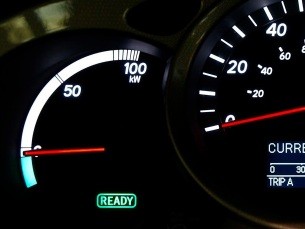
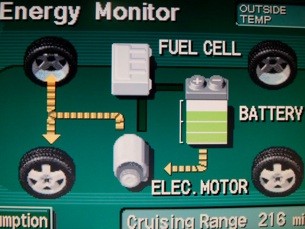
Under the hood of the FCHV-adv, the silver power control unit – similar to the PCU used in the Prius – dominates the view. The PCU is where the inverter, converter, computer and other electronics are housed. Buried under the PCU and assorted wires is the hydrogen fuel cell stack and the hydrogen recirculation system. The hydrogen for the stack comes from four 10,000-psi tanks that together can hold six kilograms. The second-gen's tanks are 5,000 psi. The stack can't use 100 percent of the H2, so some of the escaping gas is captured and fed back into the anode side of the fuel cell. The fuel economy of the stack was also improved by about 25 percent by changing the hydrogen pump, the humidifier, the control software and other aspects. Toyota engineers made a lot of incremental improvements to the latest-generation FCHV-adv and, taken together, they extend Toyota's official range of the FCHV-adv to 310 miles (500 kilometers). In 2009, the National Renewable Energy Laboratory and the Savannah River National Laboratory released a PDF stating that the vehicle's maximum range was an estimated 431 miles. On the optimistic 10-15 drive cycle that the Japanese government uses to establish fuel economy ratings, the FCHV-adv is rated at 790 km (491 miles). You can see under the skin of the FCHV-adv here.
Under the trunk floor sits a 21 kW NiMH battery from Panasonic. This is similar to the pack used in the standard Prius model, but it doesn't give the FCHV-adv any EV-only driving capability. Instead, the battery is only used to assist the fuel cell by providing additional acceleration power and to recapture brake energy. The acceleration assist is important because there can be a delay between stepping on the go pedal and getting the vehicle to respond, we were told. The always-on electrons in the pack prevent this from happening. Even with the battery assist, though, the FCHV-adv is not a quick car. It will get you to the speed you want to reach, just not right away. It is fast, though, for what it is, and it is mighty impressive how unnoticeably the FCHV-adv accelerates. In fact, the SUV gets going so smoothly that we managed to hit 95 miles per hour before realizing it.
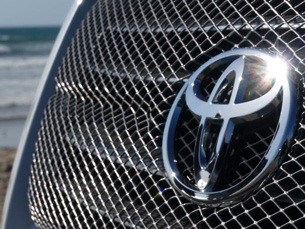
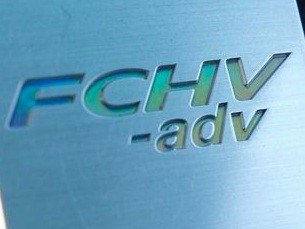
The reality of the FCHV-adv is that it's got a lot of new technology packed into a normal-looking and normal-driving vehicle. The FCHV-adv is heavier than the standard highlander, the suspension tuning was changed. We didn't notice during our short drive. Considering most non-powertrain parts in the hydrogen SUV are the same as what you can get in the Highlander today – if you like the way the normal model drives, you'll like the FCHV-adv. What else is there to say? Toyota is taking a similar incremental progress approach to the development of the plug-in Prius.
So, this is the third-generation FCHV-adv. It's a step up from the second-gen, and it shows where Toyota is going with the technology on the way to the planned roll-out in 2015 of the company's first production hydrogen fuel cell vehicle. Now that the technology is working as expected, the team working on the next-gen models has one important goal: reduce cost by about 90 percent. What will that cost? Unknown. We couldn't get a specific target number for this price, just that Toyota wants the production H2 model to be able to compete with the plug-in hybrids and pure electric models of 2015. What will it look like? Another unknown. It's unlikely that Toyota will choose to make the Highlander the company's first H2 offering, the technology demands a fresher look. We doubt Toyota will manage to create a car as gorgeous as the Honda FCX Clarity for their first H2 model, so we guess the vehicle will look at least a little something like today's Prius. A cost reduction down to 1/10th of today's number is an unimaginably huge task; we're pretty sure the idea of having four more years to crack this nut makes a lot of people in Toyota's R&D centers quite happy.
Photos by Sebastian Blanco / Copyright ©2010 Weblogs, Inc.
Our travel and lodging for this media event were provided by the manufacturer.
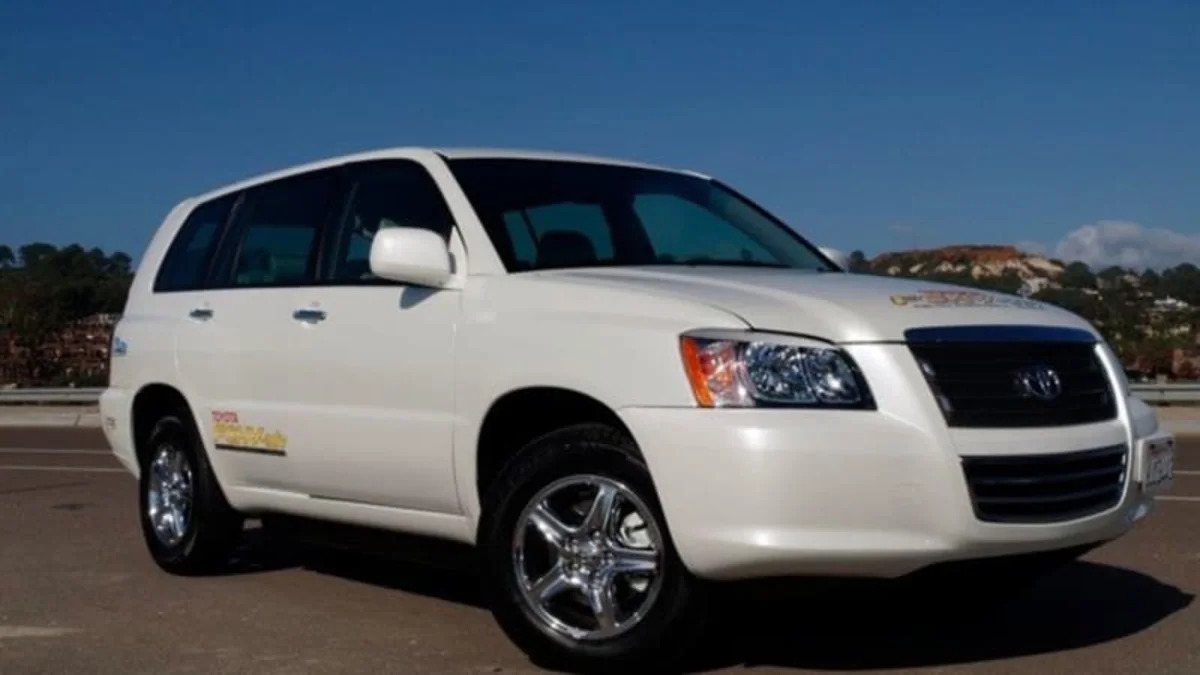


Sign in to post
Please sign in to leave a comment.
Continue